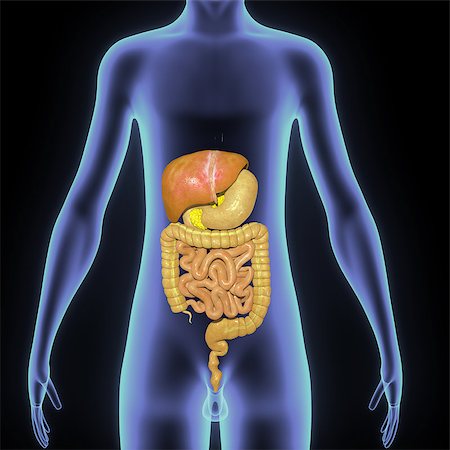-
In the human digestive system, the process of digestion has many stages, the first of which starts in the mouth (oral cavity). Digestion involves the breakdown of food into smaller and smaller components which can be absorbed and assimilated into the body. The secretion of saliva helps to produce a bolus which can be swallowed to pass down the oesophagus and into the stomach.
Super Valor sin royalties y Suscripción
-
The human skin is the outer covering of the body. In humans, it is the largest organ of the integumentary system. The skin has multiple layers of ectodermal tissue and guards the underlying muscles, bones, ligaments and internal organs.
Super Valor sin royalties y Suscripción
-
In the human digestive system, the process of digestion has many stages, the first of which starts in the mouth (oral cavity). Digestion involves the breakdown of food into smaller and smaller components which can be absorbed and assimilated into the body. The secretion of saliva helps to produce a bolus which can be swallowed to pass down the oesophagus and into the stomach.
Super Valor sin royalties y Suscripción
-
The female reproductive system contains two main parts: the uterus, which hosts the developing fetus, produces vaginal and uterine secretions, and can pass sperm through to the Fallopian tubes; and the ovaries, which produce the female's egg cells.
Super Valor sin royalties y Suscripción
-
The human brain is the main organ of the human nervous system. It is located in the head, protected by the skull. It has the same general structure as the brains of other mammals, but with a more developed cerebral cortex.
Super Valor sin royalties y Suscripción
-
The human brain is the main organ of the human nervous system. It is located in the head, protected by the skull. It has the same general structure as the brains of other mammals, but with a more developed cerebral cortex.
Super Valor sin royalties y Suscripción
-
Cardiac muscle (heart muscle) is involuntary striated muscle that is found in the walls and histological foundation of the heart, specifically the myocardium. Cardiac muscle is one of three major types of muscle, the others being skeletal and smooth muscle.
Super Valor sin royalties y Suscripción
-
Capillaries are the smallest of a body's blood vessels (and lymph vessels) that make up the microcirculation. Their endothelial linings are only one cell layer thick. These microvessels, measuring around 5 to 10 micrometres (µm) in diameter, connect arterioles and venules, and they help to enable the exchange of water, oxygen, carbon dioxide, and many other nutrients and waste chemical substances
Super Valor sin royalties y Suscripción
-
The female reproductive system (or female genital system) contains two main parts: the uterus, which hosts the developing fetus, produces vaginal and uterine secretions, and passes the male's sperm through to the fallopian tubes; and the ovaries, which produce the female's egg cells.
Super Valor sin royalties y Suscripción
-
The facial muscles are a group of striated skeletal muscles innervated by the facial nerve (cranial nerve VII) that, among other things, control facial expression. These muscles are also called mimetic muscles.
Super Valor sin royalties y Suscripción
-
The heart is a muscular organ in both humans and other animals, which pumps blood through the blood vessels of the circulatory system. Blood provides the body with oxygen and nutrients, and also assists in the removal of metabolic wastes. The heart is located in the middle compartment of the mediastinum in the chest.
Super Valor sin royalties y Suscripción
-
The human lungs are the organs of respiration. Humans have two lungs, a right lung and a left lung. The right lung consists of three lobes while the left lung is slightly smaller consisting of only two lobes (the left lung has a "cardiac notch" allowing space for the heart within the chest).
Super Valor sin royalties y Suscripción
-
The skeleton is the body part that forms the supporting structure of an organism. There are two different skeletal types: the exoskeleton, which is the stable outer shell of an organism, and the endoskeleton, which forms the support structure inside the body. There are also two other forms of skeleton referred to, the hydroskeleton and the cytoskeleton.
Super Valor sin royalties y Suscripción
-
Muscle is a soft tissue found in most animals. Muscle cells contain protein filaments of actin and myosin that slide past one another, producing a contraction that changes both the length and the shape of the cell. Muscles function to produce force and motion.
Super Valor sin royalties y Suscripción
-
The heart is a muscular organ in both humans and other animals, which pumps blood through the blood vessels of the circulatory system. Blood provides the body with oxygen and nutrients, and also assists in the removal of metabolic wastes. The heart is located in the middle compartment of the mediastinum in the chest.
Super Valor sin royalties y Suscripción
-
Sperm is the male reproductive cell and is derived from the Greek word (sp??µa) sperma (meaning "seed"). In the types of sexual reproduction known as anisogamy and its subtype oogamy, there is a marked difference in the size of the gametes with the smaller one being termed the "male" or sperm cell.
Super Valor sin royalties y Suscripción















